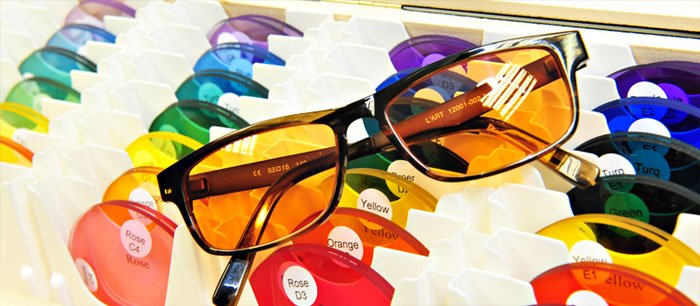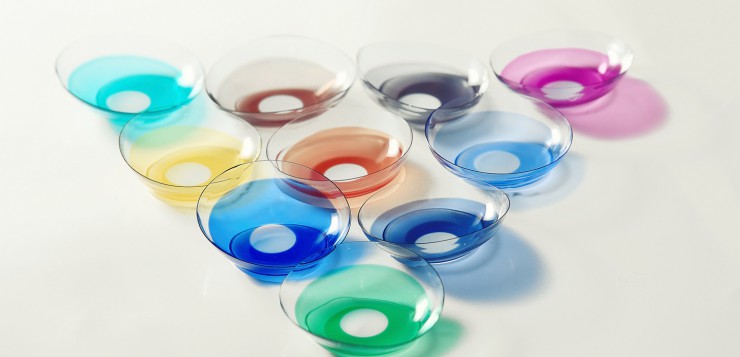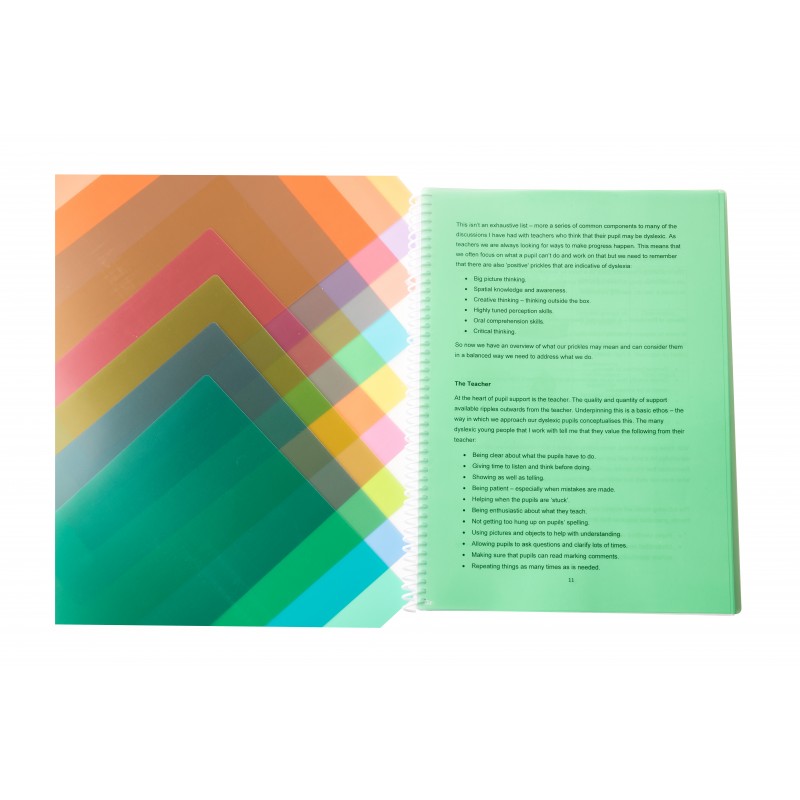Dyslexia Glasses & Coloured Overlays: A Guide
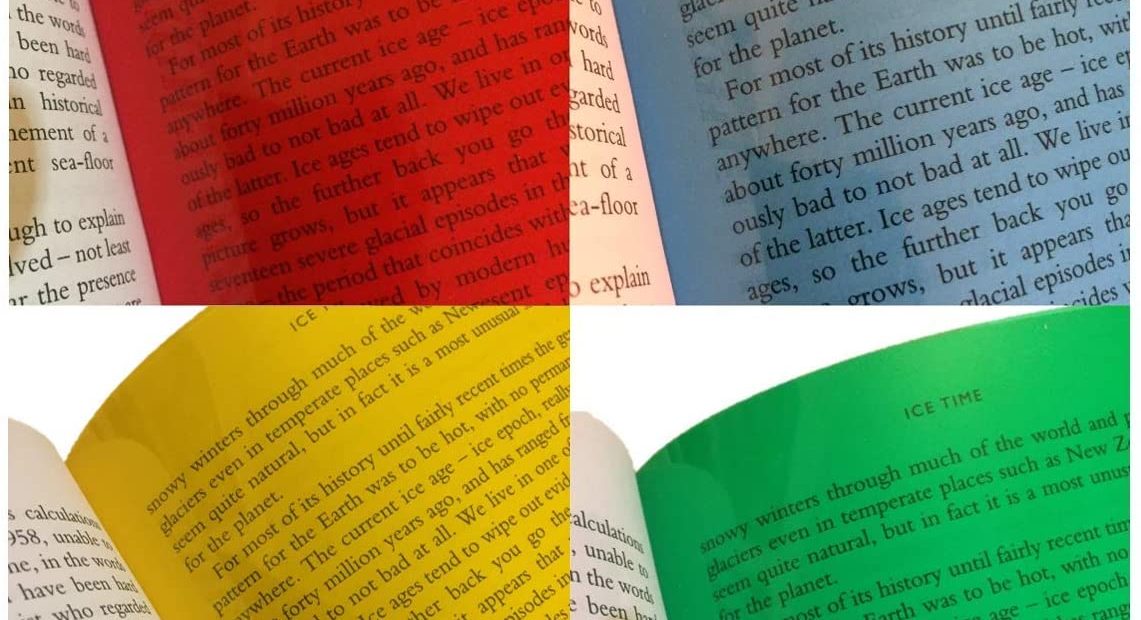
Blog post updated on 20th April 2022
There are different types of colour filters that can aid reading for people with dyslexia. Find out all about dyslexic glasses and overlays here.
How do Tinted Glasses and Lenses Work?
There are two different types of coloured lenses. One type is inserted into glasses frames while the other type is worn like contact lenses. They work by making text stand out and giving the illusion that the text is on a coloured background. They further work by altering “the wavelength of each colour, re-calibrating the speed that signals are passed” from the eye to the brain. Coloured lenses also selectively change the speed of information “to re-balance the wearer’s perception of text.”
Staff at the Contact Lens Practise “use patented ChromaGen lenses and dyslexia testing to reliably screen for visual dyslexia in adults and children alike. After a comprehensive eye examination to assess for other underlying issues,” the optometrists will use a colourimeter to test the patient’s reaction “to an array of different colour combinations.” One colour combination may be more effective than the other, so the patient will be given lenses in the colour combination they found the most effective.
Do Coloured Lenses and Tinted Glasses Help with Dyslexia?
In 1999, British scientists carried out clinical trials that “found that coloured lenses could help people with visual dyslexia.” 400 children participated in the most recent study where “90% reported a significant improvement in reading, writing and comprehension skills” whilst wearing the coloured lenses. Over the 6-month assessment period, the children showed a minimum improvement rate of 45% for their reading, writing and comprehension skills.
How Do Coloured Overlays for Dyslexia Work?
Dyslexia overlays, also known as coloured overlays or tinted overlays, are thin sheets of coloured transparent plastic that can be placed over white sheets of text in order to make it easier for dyslexic people to read. They work by making words stand out. They can also be beneficial for people who have poor eye contact as part of their autism or those with visual stress, also known as Meares-Irlen Syndrome.
Overlays are similar to the aforementioned tinted glasses. They come in a variety of colours to suit the personal preferences of each individual.
The reason some people find it hard to read black text on a white background is because “their visual cortex is oversensitive to certain wavelengths.” When people with dyslexia or visual stress read black text with an overlay over it, the text becomes clearer while headaches or migraines can be reduced.
Do Coloured Overlays Help with Dyslexia?
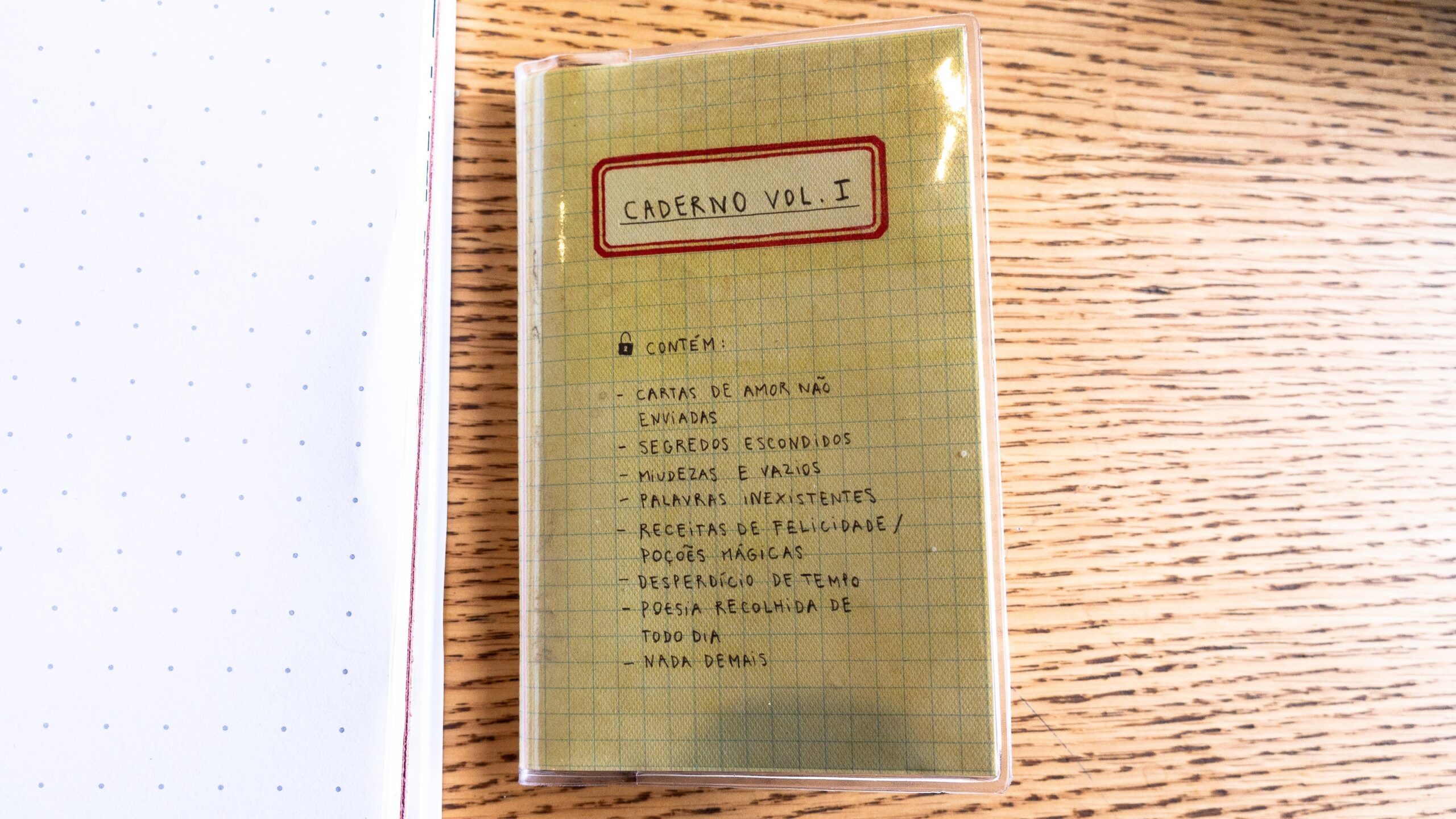
Image by Dayvison de Oliveira Silva, Pexels.com
According to a teenager mentioned in ‘Reading Through Colour’ (2003) by Professor Arnold Wilkins, using a coloured overlay when reading “made all the difference.” The teenager quoted his experience as “the most important moment of [his] life” and he could “see text clear as glass.”
Contrary to the coloured lenses research that was conducted in 1999, coloured overlays can be looked upon as controversial. This is because, in an experiment conducted where some participants were asked to read text without an overlay and then with an overlay, there was no significant difference between the reading speeds for either method. For example, Emily, aged 7 when the experiment took place, had a reading speed of 49 correct words per minute (CWPM) without an overlay and 48 CWPM with the overlay. The overlays being referred to as dyslexia overlays can also be considered controversial because they do not only help people with dyslexia, but they can also be beneficial for people with dyspraxia and AD(H)D.
What Colour Overlay is Best for Dyslexia?

Image by Steve Johnson, Pexels.com
In the featured image of the same book page with 4 different colours of overlay on it, April Slocombe, the author of this blog post who has autism rather than dyslexia, thinks the most effective colours are yellow and blue because she thinks they are the brightest colours that make the text stand out more. Slocombe thinks the red and green overlays make the text somewhat more difficult to read because they are darker colours. Preferred coloured overlays in terms of reading effectiveness can vary from person to person.
Dyslexia assessor Georgina Smith says that coloured overlays can help people with visual stress as well as dyslexia. When Smith assessed some students, who were experimenting with coloured overlay rulers, the students said that they wanted to try their favourite colours at first. Smith thought that it was best for the student to try every coloured overlay ruler available to them for 10 – 15 minutes before deciding which colour worked best for them.
Our top 3 dyslexia glasses & coloured overlays recommendations
The effectiveness of dyslexia glasses and lenses can vary from person to person, as dyslexia is a complex condition with individual differences.
That being said, here are a few popular brands and technologies that are commonly associated with dyslexia glasses and lenses:
- ChromaGen: ChromaGen lenses are designed to help with visual processing issues related to dyslexia. They use coloured filters to modify the wavelength of light entering the eye, which may help improve reading ability for some individuals.
- Irlen: Irlen lenses, also known as Irlen Spectral Filters, are coloured overlays or lenses that aim to reduce perceptual distortions and visual stress experienced by some people with dyslexia. The specific colours are customised for each individual based on their symptoms.
- Essilor: Essilor is a well-known eyewear company that offers a range of lenses, including those designed for dyslexia. They have developed specific lens technologies, such as Eyezen lenses, which are designed to reduce visual fatigue and improve comfort during prolonged reading or computer use.
Where to buy dyslexia glasses?
Dyslexia glasses, also known as coloured overlays or coloured lenses, are sometimes used to help individuals with dyslexia alleviate visual stress and improve reading. These glasses are typically recommended and prescribed by a qualified optometrist or eye care specialist, especially one with expertise in vision-related difficulties associated with dyslexia. Alternatively, you could consider finding a pair you like from an online shop like Amazon.
Conclusion
Coloured overlays, glasses and contact lenses can mostly be helpful for people with dyslexia, visual stress and autism. While the research from 1999 proved that coloured lenses can be effective, the other research found that coloured overlays can be controversial due to them not making any significant differences between reading speeds with or without them. Different people have different preferences for coloured lenses and overlays in terms of how effective they can be to help them read.

